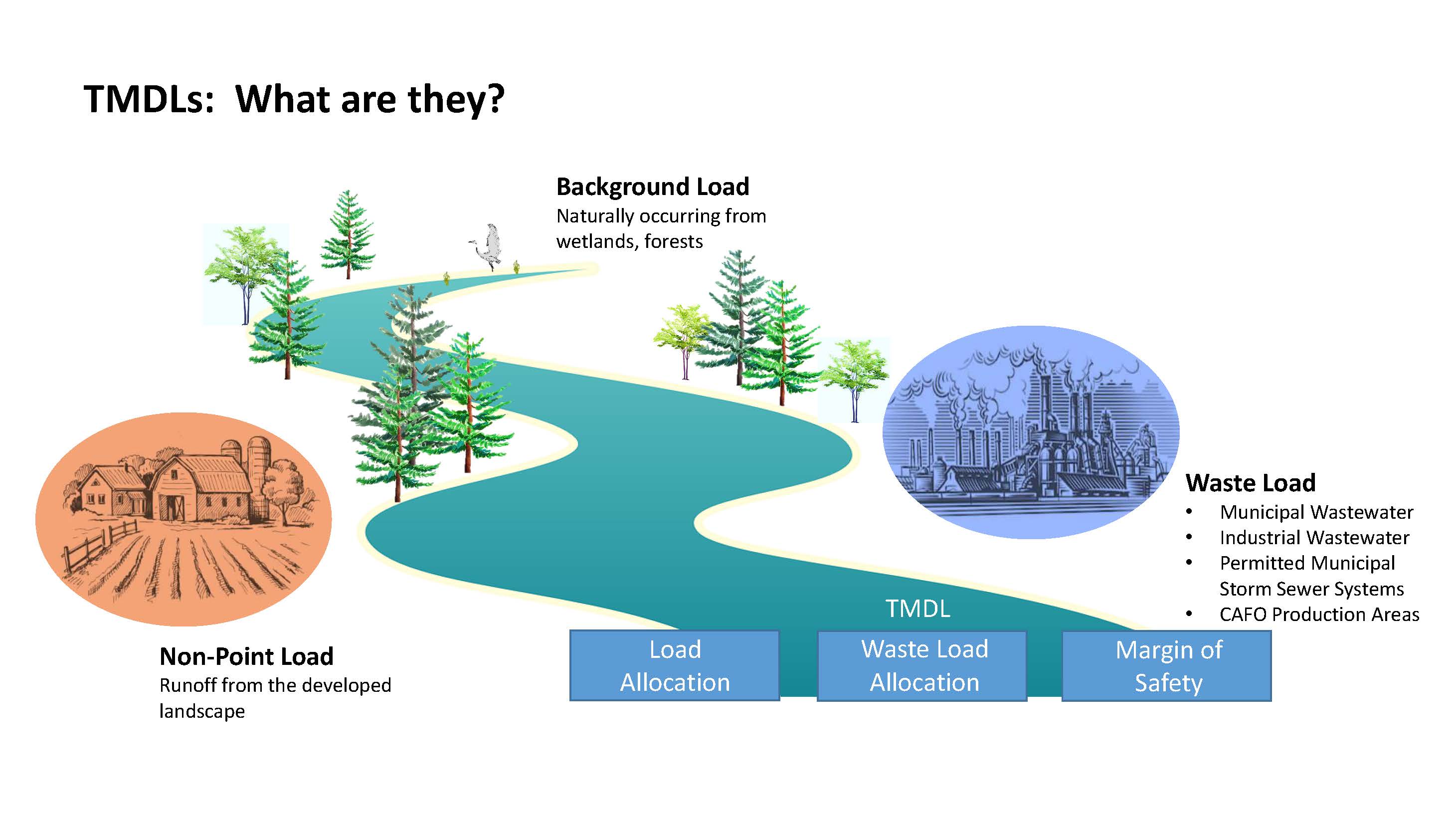TMDL 101
What are TMDLs?
Section 303(d) of the Clean Water Act requires states to identify all water bodies that do not meet state water quality standards. The state must calculate how much of a pollutant can be put in these waters without violating the standard. That quantity is reported as a Total Maximum Daily Load (TMDL).
TMDLs include pollutant levels from point and non-point sources, plus a safety factor to maintain the integrity of the water. They may set limits on pollutants entering water bodies, or serve as planning tools for improving water quality. MDEQ designs TMDLs so that impaired water bodies will meet and continue to meet state water quality standards.
 How are TMDLs developed?
How are TMDLs developed?
First, the water body must be identified as impaired. MDEQ monitors and collects data from across the state to assess water quality. Data in the surrounding area or watershed is used to determine the most sensitive environmental conditions: stream flow, temperature, weather conditions, etc. MDEQ looks at the impact of pollutants on these water bodies, considers seasonal variations, and accounts for background levels of pollutants (levels occurring in nature). Waters impaired by a pollutant are included in the state’s Section 303(d) list and scheduled for TMDL development.
MDEQ uses scientifically accepted mathematical and computer models to develop TMDLs. These models represent what is happening in nature and predict how pollutants behave in the water body. Simulated pollutant loads can be added or removed to calculate the maximum allowable amount. Information used in the model can include: stream flow, land elevation, amount of pollutants from point and nonpoint sources, water temperature, land use distribution, soil data, meteorological and weather data, etc.
What does a TMDL propose?
A TMDL proposes acceptable loads of a pollutant from point and nonpoint sources in the watershed. Point sources include municipal wastewater treatment facilities and industrial waste treatment plants. Non-point sources include direct runoff from agricultural lands, urban areas, forested lands, etc.
Why are we doing TMDLs?
TMDLs are a requirement of the federal Clean Water Act (CWA), which was passed in the early 70s to provide direction for maintaining and restoring the quality of the nations waters. At the time, Mississippi, as well as the rest of the country, was focused on addressing the most severe pollution problems which were caused point sources and unsewerted communities where improperly treated wastewater was severely impacting the nations surface waters. Addressing those problems took priority over development of TMDLs and consequently resolved many of the nations most severe water quality problems.
In 1997, the Sierra Club sued the Environmental Protection Agency for not developing TMDLs in most states, including Mississippi. EPA settled the lawsuit by agreeing to do all of the TMDLs listed in the 1996 Section 303(d) list within 10 years. Although not a party to the law suit, MDEQ has established a goal to develop TMDLs for Mississippi in accordance with the court order.
What about the public?
The public plays an important role in TMDL development. A 30-day public notice period will be held when a TMDL is published. Anyone is welcome to comment on the TMDL during this time. Any comments received will be recorded in the TMDL, and are considered by MDEQ prior to finalizing the report. MDEQ maintains an emailing list for the public that desires notification of TMDL activities.

